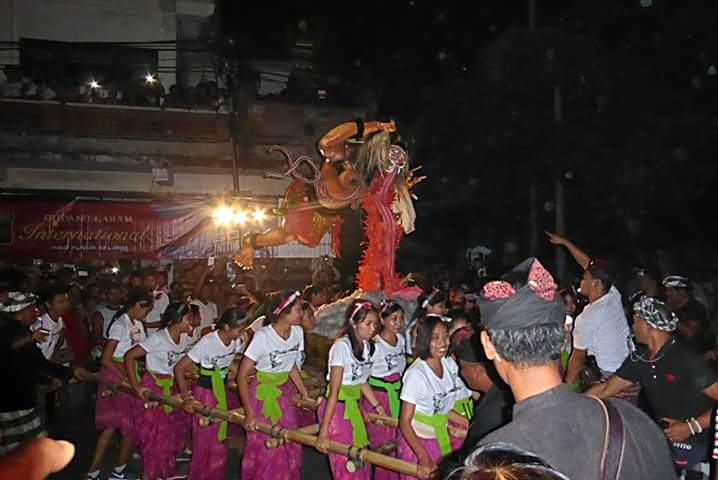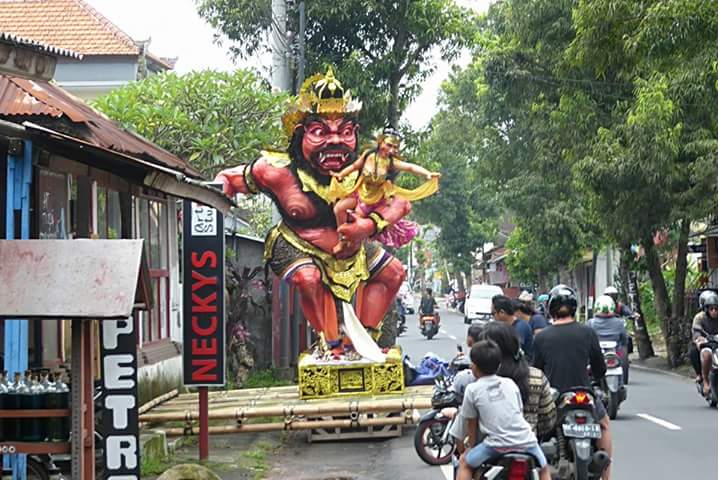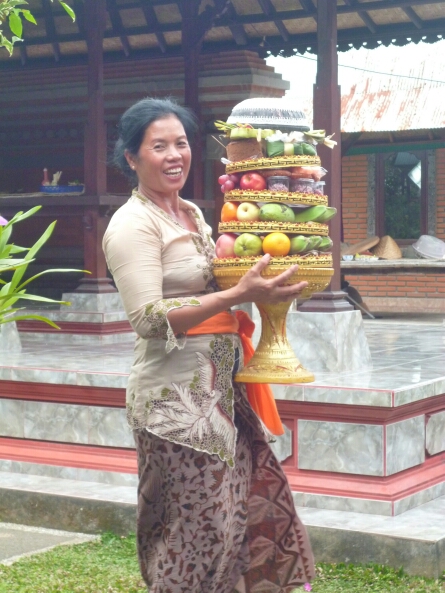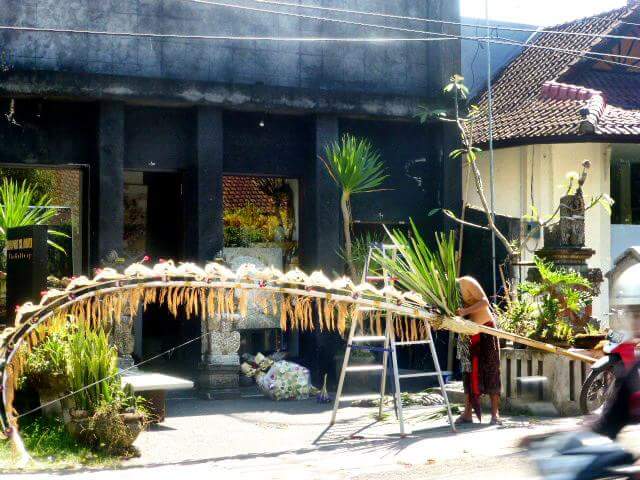Postcards from Bali: Modern twist threatens traditional celebrations

Chances are, if you’ve been to Bali, you’ll have seen the beautifully decorated, tall, curved bamboo poles outside every compound and building on the island.
Even if you have never been to the island, these penjors, as they are called, are practically a symbol of Bali and you’ll have seen them in a photograph. They were erected again last Tuesday in readiness for the celebration of Galungan, a Balinese holiday, on Wednesday and will stay in place for 40 days.

Coming so soon after Nyepi and the Day of Silence the preparations have been keeping the Balinese people even busier than usual. This has been an unusual juxtaposition of two calendars: the lunar calendar deciding the Nyepi date and the Balinese 210-day calendar determining Galungan.
Work in the compounds has been fast and furious. The women must prepare elaborate offerings and the men are responsible for penjors and food. Once this would have been all, but in an economy driven by tourism, most people have to fit paid work in as well. But, forever smiling, the people somehow manage. Speaking of food, this is not a good time for pigs, exactly like Thanksgiving is not a good time for turkeys!

Galungan, which is always on a Wednesday, is followed 10 days later by Kuningan (always a Saturday) so what is this period, sometimes referred to as the Balinese equivalent of Christmas, all about? In a word, family.
As well as being a celebration of the triumph of good over evil, Galungan is when the spirits of deceased ancestors return to their compounds for a friendly visit until they go back to the sacred mountain on Kuningan Day. The penjors signal a welcome from the living relatives who have a duty to be hospitable, hence the food and offerings. The curved shape of the penjor echoes the shape of the sacred mountain of Bali, Gunung Agung.

Over recent years the penjors have become more and more elaborate (and expensive). Traditionally they were simple and adorned with symbolic basic needs: coconut leaves, fruit from the garden, small cakes, a cereal, such as rice or corn and some temple coins. But competitive human nature has seen a growth in pop-up decoration shops selling all sorts of extras and, a bit like Christmas light displays, oneupmanship has crept in. Very non-Balinese. In fact, our village elders have sent a letter to every compound to say that for this Galungan, only natural materials are to be used. I have heard that this has happened in other areas also. Not a bad thing, but the enterprising sellers won’t be impressed.

Many shops and businesses are closed for this happy, family period as people return to their villages in order to honour the ancestors. Many ceremonies are held over the ten days, but there is also time to visit friends, exchange gifts and enjoy the abundance of food. Young boys parade through the streets to the sound of flute and gamelan, and for a donation will perform a ‘ferocious’ Barong dance. It’s not unusual for them to come into restaurants, where they will hope to find some tourist generosity. All great fun and impossibly cute.
On Kuningan Day it’s time to say goodbye to the ancestors until next time — November will mark 210 days — but the penjors will remain, losing their lustre but retaining their symbolism, for a few more weeks.

Last time I wrote about the hijinks that precede the Silent Day. They are over for another year, but our village certainly put on a show to remember, with wonderful music and dancing as well as the ogoh—ogoh parade. History was made as for the first time, some of the young women made and carried their own ogoh-ogoh. There must have been some sort of conspiracy as this also happened in other villages around Ubud. It was great to see.








 Proudly Australian owned and operated
Proudly Australian owned and operated